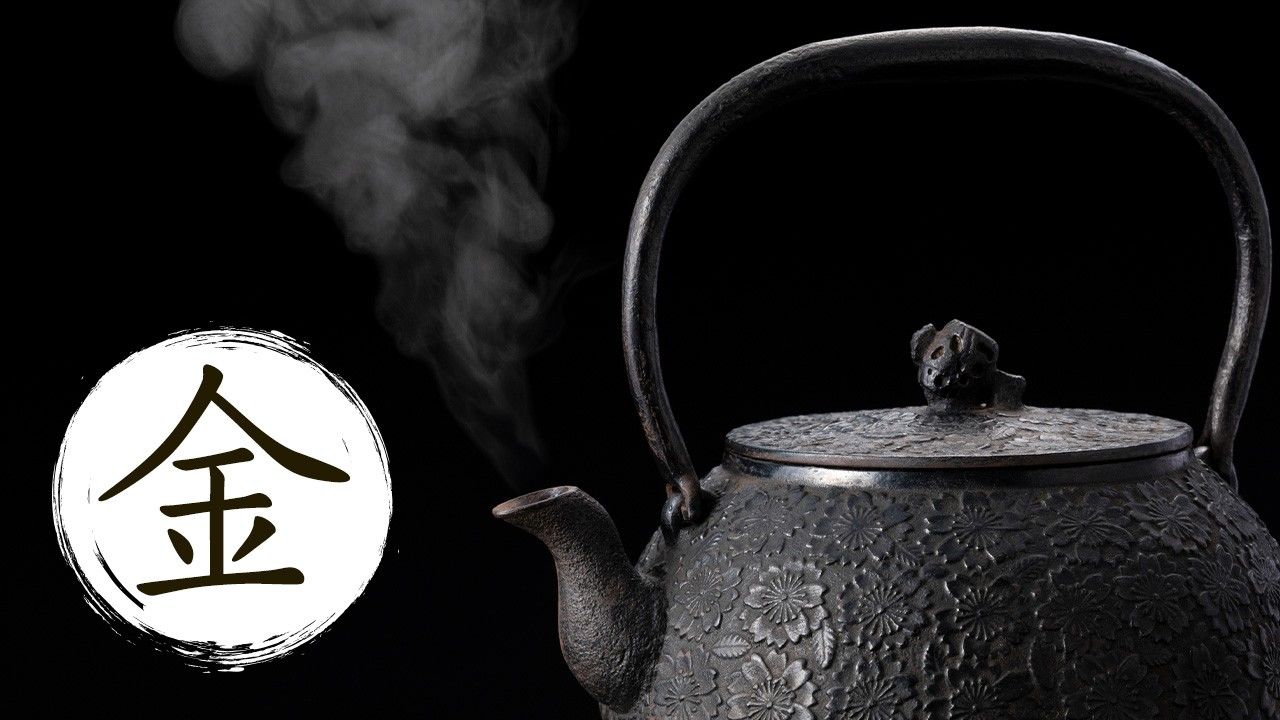
Learning and Loving the Japanese Language
Going for Gold: Kanji with the Metal Radical (金)
Language Culture- English
- 日本語
- 简体字
- 繁體字
- Français
- Español
- العربية
- Русский
The kanji 金, meaning “metal,” is among the first group of 80 characters learned by children in the first grade of elementary school. It also appears as a radical in many characters associated with this useful material; if a kanji includes 金 (usually on the left), there is a strong possibility that it has a clear connection to metal. We introduce the most common characters with the metal radical below, and there are lists at the end of the article providing pronunciations.
As metal is one of the classical elements, 金 appears in the name of the planet Venus (金星) and later came to be part of Friday (金曜日) too. When used by itself, the kanji commonly means “gold.” It also stands for the related concept of “money,” whether directly as お金 (money) or in combination in words like 現金 (cash) and 金融 (finance).
Kinds of Metal and Metal Objects
Including gold (金), there are six characters for specific kinds of metal among the standard 2,136 jōyō kanji. The other five are silver (銀), iron (鉄), copper (銅), lead (鉛), and steel (鋼).
Many kanji represent things that are made of metal, such as a needle (針), chain (鎖), lock (錠), key (鍵), or sickle (鎌). There are characters for different kind of bells; 鈴 are typically small and held in the hand, while 鐘 are usually large, like those seen at temples. Nabe (鍋) are general-purpose cooking pots, while kama (釜) may refer to a large iron pot for making rice or a kettle used in the tea ceremony.
Other “metal” kanji have shifted somewhat from their origins. Mirrors (鏡) were once commonly made of bronze. Buddhist priests use metal bowls (鉢) for alms, but the character is now used for all kinds of bowls and flowerpots, too, even when made of fired earth. Once used for coins and to represent the sen (one-hundredth of a yen), the kanji 銭 appears in words connected with money like 小銭, meaning “small change,” and even 銭湯, as these sentō public bathhouses are said to have derived their names from having an initial entrance fee of one sen. One particularly striking example of meaning shift comes with the kanji adopted for guns and firearms (銃), which originally referred to a hole in an ax head for inserting the handle.
Another rough group includes kanji generally linked to metal, such as 鉱, which appears in compounds like 鉱物 (mineral) and 鉱山 (mine). Some are commonly used in adjectives like 鋭 (sharp) and 鈍 (blunt). Others are related to actions; 鋳 in the verb 鋳る means to “cast” or “mint.” Both 鍛 and 錬 can mean to “temper” metal, while the verb 鍛える also often means to “train.”
Kinds of metal
| 金 | gold (kin); metal (kane); お金: money (okane) |
| 現金: cash (genkin); 金融: finance (kin’yū); 金星: Venus (kinsei); 金曜日: Friday (kin’yōbi) | |
| 銀 | silver (gin) |
| 銀行: bank (ginkō) | |
| 鉄 | iron (tetsu) |
| 鉄道: railway (tetsudō) | |
| 銅 | copper (dō) |
| 青銅: bronze (seidō) | |
| 鉛 | lead (namari) |
| 鉛筆: pencil (enpitsu) | |
| 鋼 | steel (hagane) |
Metal things
| 鏡 | mirror (kagami); kane/gane |
| 望遠鏡: telescope (bōenkyō); 眼鏡 eyeglasses (megane) | |
| 針 | needle (hari) |
| 銭 | sen, former currency unit worth one-hundredth of a yen; zeni |
| 銭湯: public bathhouse (sentō); 小銭: small change (kozeni) | |
| 鎖 | chain (kusari) |
| 錠 | lock (jō) |
| 鐘 | bell (usually large, as at a temple) (kane) |
| 鈴 | bell (usually small) (suzu) |
| 銃 | gun (jū) |
| 鉢 | bowl/flowerpot (hachi) |
| 鍵 | key (kagi) |
| 鎌 | sickle (kama) |
| 鍋 | cooking pot (nabe) |
| 釜 | pot for rice/tea ceremony kettle (kama) |
Other metal-related words
| 鉱 | means “mineral”; rare as single kanji |
| 鉱物: mineral (kōbutsu); 鉱山: mine (kōzan) | |
| 鋭 | 鋭い: sharp, perceptive (surudoi) |
| 鈍 | 鈍い: blunt, slow-witted (nibui) |
| 鋳 | 鋳る: to cast, mint (iru) |
| 鍛 | 鍛える: to temper, train (kitaeru) |
| 錬 | means “to temper” or “to polish”; rare as single kanji |
| 錬金術: alchemy (renkinkjutsu) |
(Originally written in English. Banner photo: Banner image © Pixta.)




